MXA RACE TEST: THE REAL TEST OF THE 2021 YAMAHA YZ250 TWO-STROKE
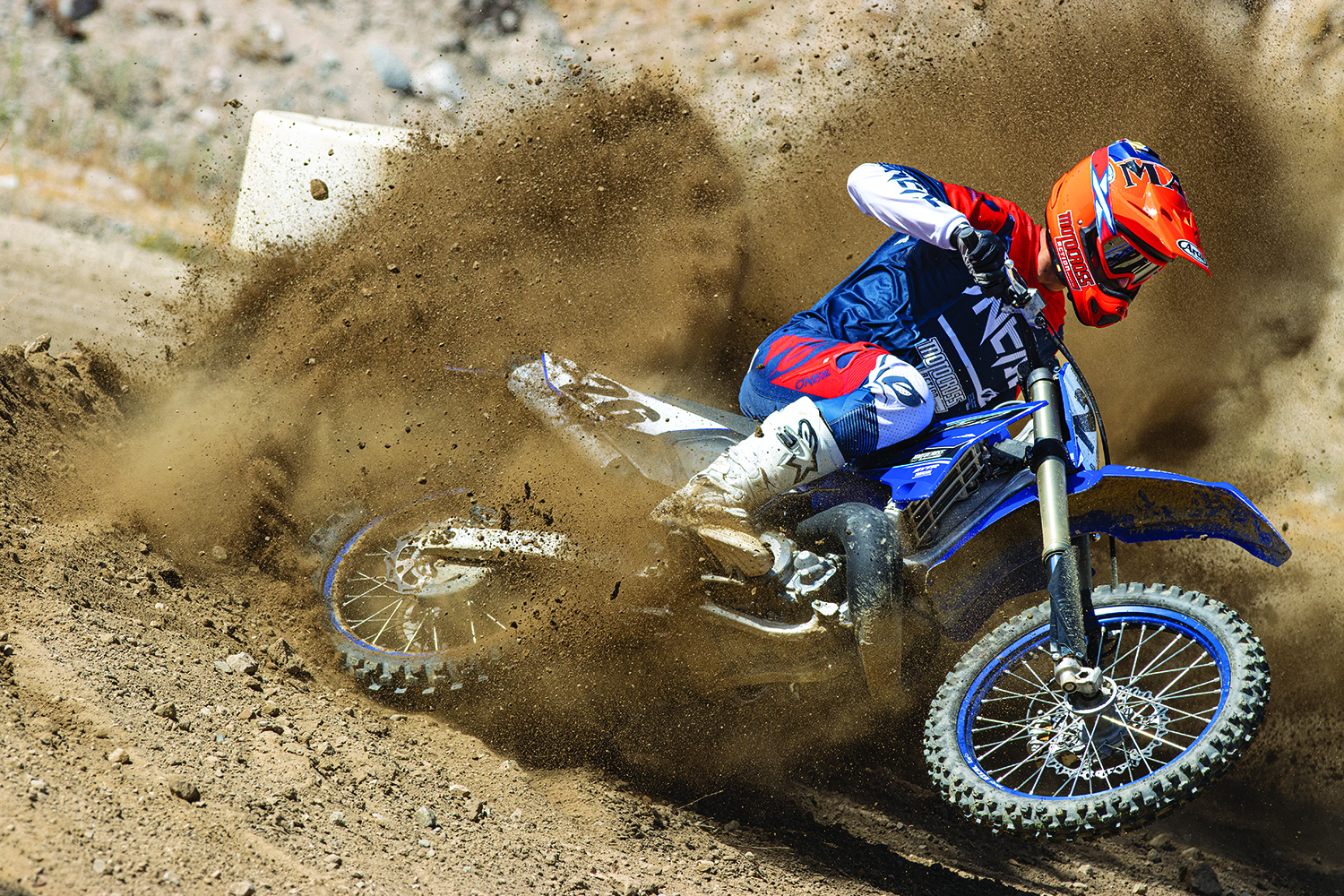
Q: FIRST AND FOREMOST, IS THE 2021 YAMAHA YZ250 BETTER THAN THE 2020 YZ250?
A: No. Over its 16-year run, there have been very few actual model updates to the basic Yamaha YZ250. Changes come to the Yamaha two-stroke at a glacial pace. But, name any motocross machine made in 2006 that is still around in any significant numbers today. The two bikes that come to mind instantly are the YZ250 and YZ125. We would gladly put our money down on a Yamaha YZ250, because we know that when it comes time to resell it, there will be a line of suitors ready to pay top dollar. It is the gold standard of used motocross bikes.
Q: HOW DOES THE OLD SOLDIER KEEP FROM FADING AWAY?
A: The best thing about the YZ250 is that Yamaha keeps making it. Yamaha’s last Japanese two-stroke competitor said, “Sayonara,” 12 years ago. In a strange twist, Kawasaki, Honda and Suzuki made it possible for Yamaha to keep making the YZ250 because they handed over a Japanese two-stroke monopoly. It wasn’t until KTM began to flex its two-stroke muscles that Yamaha faced a worthy competitor.
The 2021 KTM 250SX is a much more technically advanced machine than the YZ250. It is 7 pounds lighter and equipped with a counterbalancer, hydraulic clutch, incredible Brembo brakes and sharper handling, but the YZ250 is still able to hold its own, thanks to the hard work of Pro Circuit, FMF, Boyesen and Moto Tassinari. But, don’t be lulled into a sense of YZ250 security. KTM is holding back. Believe it or not, KTM had 50-horsepower 250SXs a few years ago but detuned them to 47 horses. KTM has been pulling its punches in the battle against the YZ250.
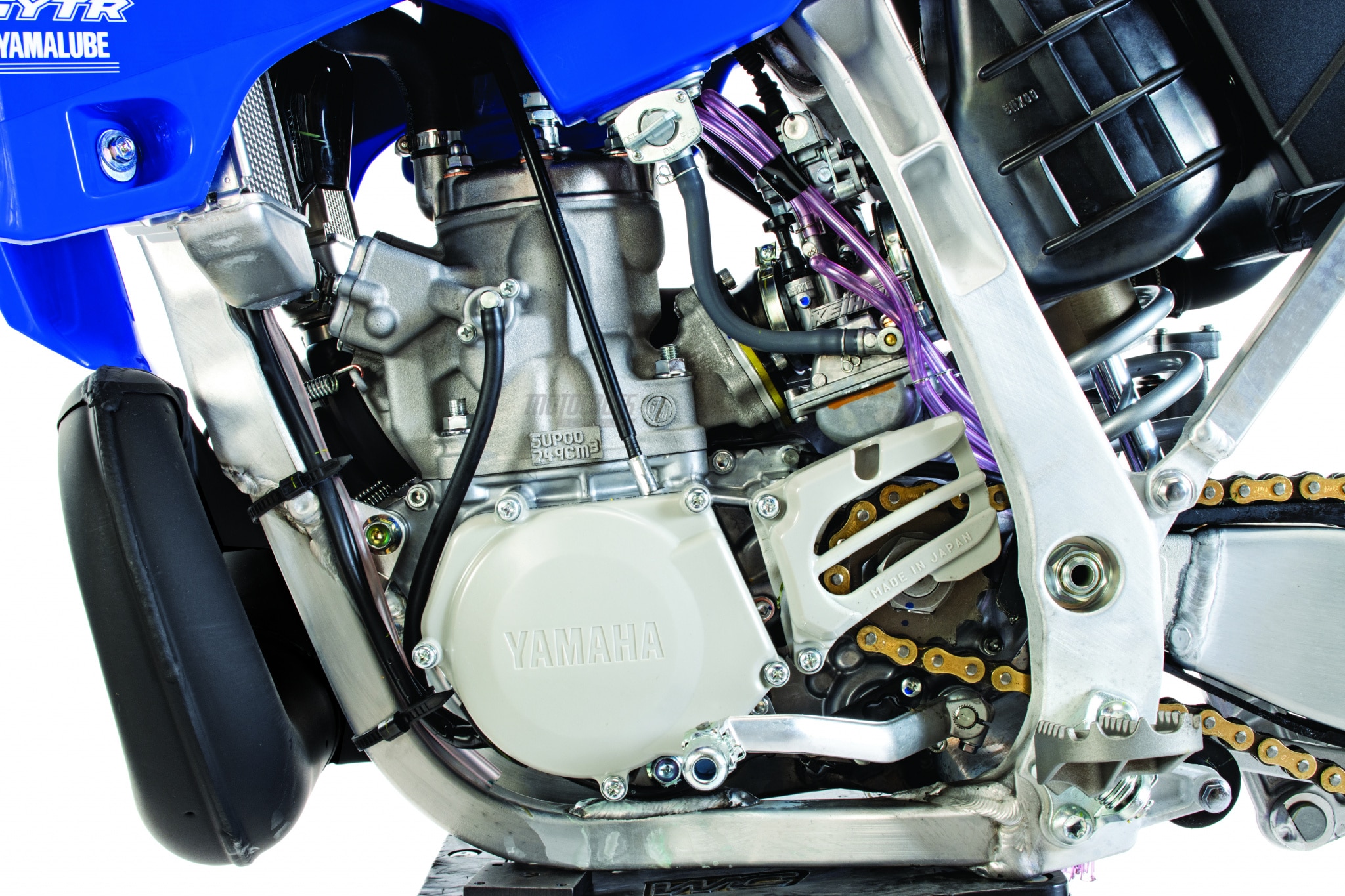
Why would KTM do that? KTM likes that the YZ250 is still around and doesn’t want to unleash the dogs on the YZ250 if it’s not necessary. KTM understands that the success and growth of the two-stroke market hinges on affordability, ease of ownership and mechanical simplicity. They don’t want to be the sheriff of a one-horse-town. They want a worthy competitor, and they don’t want a tech war.
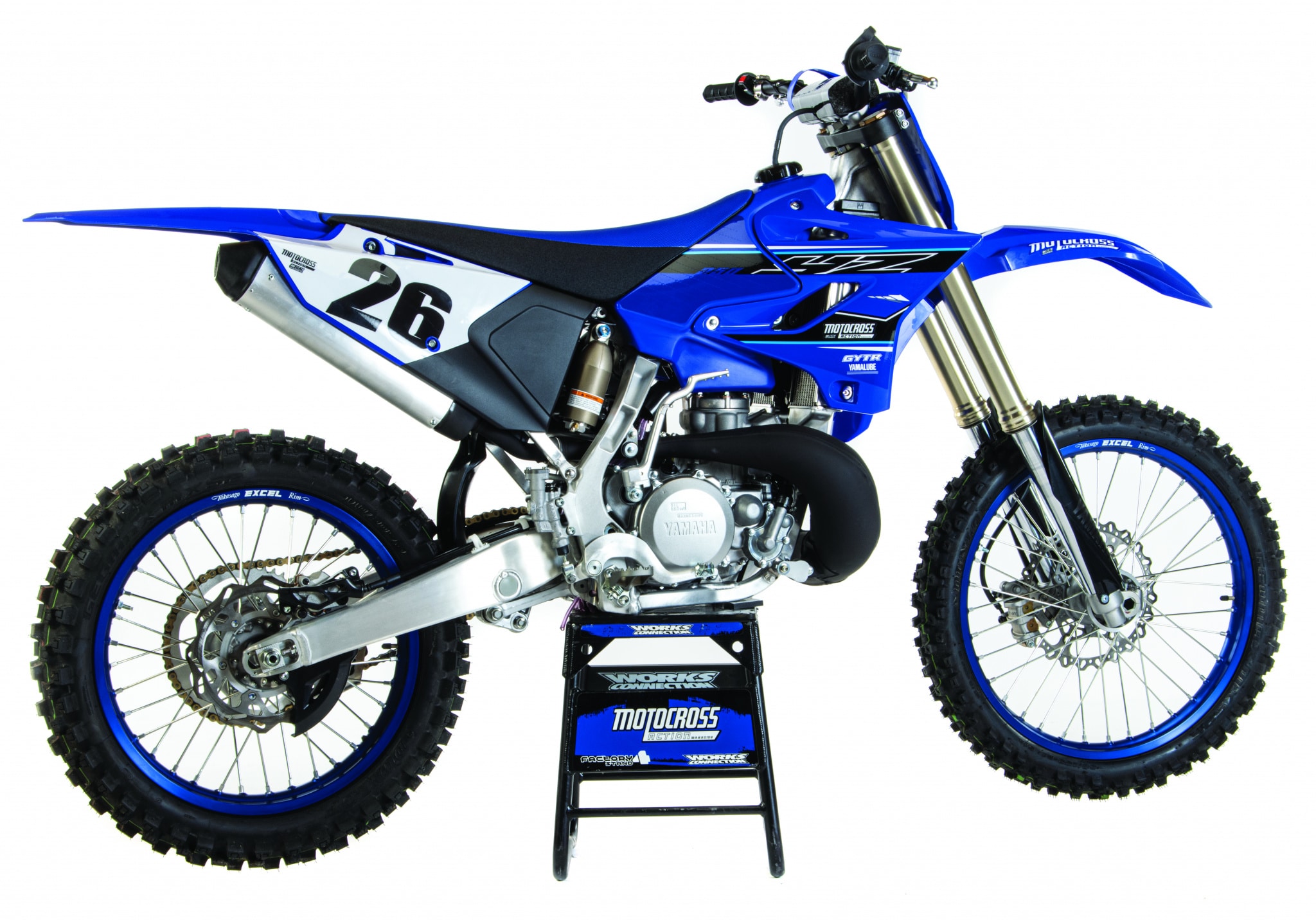
Don’t believe us? Think about it for a minute. KTM sat on its Transfer Port Injection (TPI) two-stroke fuel-injection system for several years and didn’t release it until European environmental rules threatened to kill the two-stroke off-road market on the continent. In response, KTM was forced to release its fuel-injected off-road models. At that point, KTM could easily have fallen back on economies of scale to make all of its two-stroke models—motocross, cross-country, enduro and dual sport—fuel-injected. But it didn’t. KTM knew that an all-in adoption of TPI technology would ruin the “affordability, ease of ownership and mechanical simplicity” mantra of two-stroke ownership. To its credit, and proof that the company understands the two-stroke buyer, KTM didn’t want to build 50-horsepower, fuel-injected two-stroke motocross bikes unless it was forced to. KTM didn’t want to raise new two-stroke prices to $10,000—no matter how good they would be.
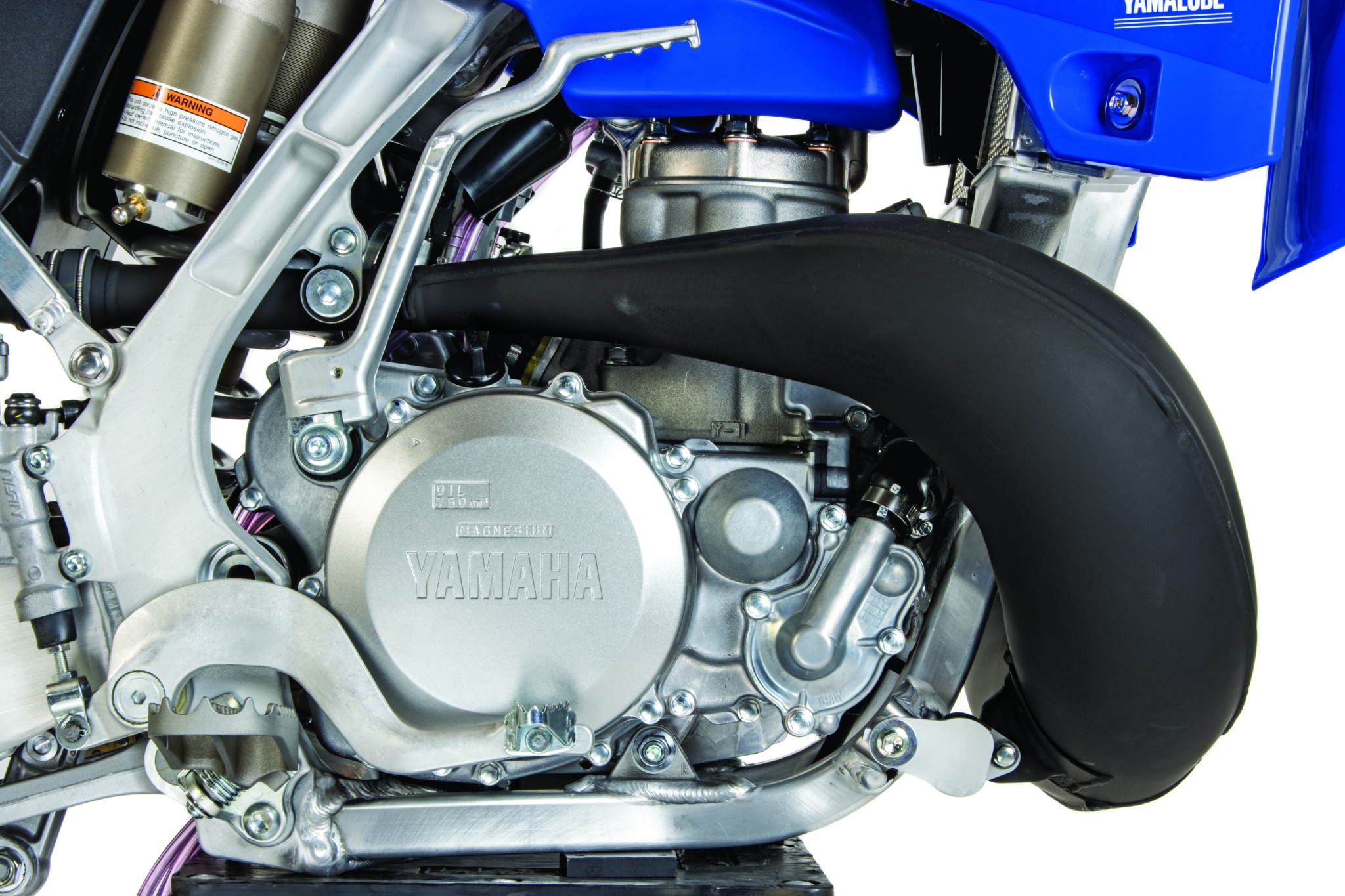
Q: HOW FAST IS THE 2021 YAMAHA YZ250?
A: Yamaha and KTM are locked in a battle of old versus new. The KTM 250SX is much more powerful than the Yamaha YZ250, but that doesn’t necessarily mean it’s faster. On the dyno, the KTM makes 47.20 horsepower, while the Yamaha YZ250 pumps out 46.08. But, it should be noted that the YZ250 doesn’t hit its peak until a high of 8800 rpm, while the 250SX hits its peak power at a lower 8200 rpm. Knowing that YZ250 and KTM 250SX horsepower are within 1 horse at peak really means very little on the track. These two powerbands have very little in common.
In motion, the KTM 250SX is significantly stronger from low to mid—as much as 4 horsepower stronger than the YZ250 at 7000 rpm. It hits hard, pulls hard and gives up early. Four horses is a lot of ponies to give up, but once the KTM 250SX peaks at 8200 rpm, it signs off quickly. And by the time the YZ250 gets to its 8800-rpm peak, the YZ250 is actually 4.7 horsepower more powerful. The KTM 250SX excels at low to mid, and the Yamaha YZ250 excels on top. It is an interesting match-up—sheer grunt versus over-rev. In our opinion, the Yamaha YZ250’s engine is broader, more manageable and easier to ride than the more potent KTM 250SX.

Q: WHAT’S SO HOT ABOUT KAYABA SSS SUSPENSION?
A: It is obvious that Kayaba SSS components were 16 years ahead of the competition when they were introduced back in 2006. The SSS forks have superb bottoming resistance and very well-thought-out damping. They are the best forks on the showroom floor today. The new breed of rehashed coil-spring forks on the Suzuki RM-Z450, Honda CRF450 and Kawasaki KX250 are not much of a threat to SSS dominance.
What has made SSS so good for so long? Yamaha’s goal with the SSS forks back in 2006 was to have firmer damping at the beginning of the stroke so that the forks wouldn’t react like a runaway train at the end of the stroke. In 2006, the Yamaha engineers wanted the YZ250 fork to ride higher in its stroke over small bumps so that it could quickly re-cock to its full travel to be better prepared for the next big hits. How did they achieve this? Before SSS forks, the typical motocross fork’s damping was 70-percent position-sensitive. That means that the damping was dictated by the position of the fork’s piston inside the cartridge rod. In simple terms, the farther the piston moved down in the cartridge rod, the stiffer the damping.
In a stroke of genius, Kayaba made the 2006 SSS forks 90-percent speed-sensitive. Speed-sensitive damping gets its name because the damping rate is determined not by the position of the fork’s piston in the cartridge rod but by the speed at which the piston moves through the cartridge rod. By switching from 30-percent speed-sensitive damping to 90 percent, Yamaha found the holy grail of suspension perfection. All the following Yamaha forks (2006 to 2021) have benefited from SSS’s linear damping. There are no hills or valleys in the SSS damping curve. It gets stiffer at the exact same rate in the first half of the travel as in the second half. Of course, it is easy now to say that all forks are speed-sensitive, but that is akin to saying that all new forks have copied Kayaba’s SSS concept.
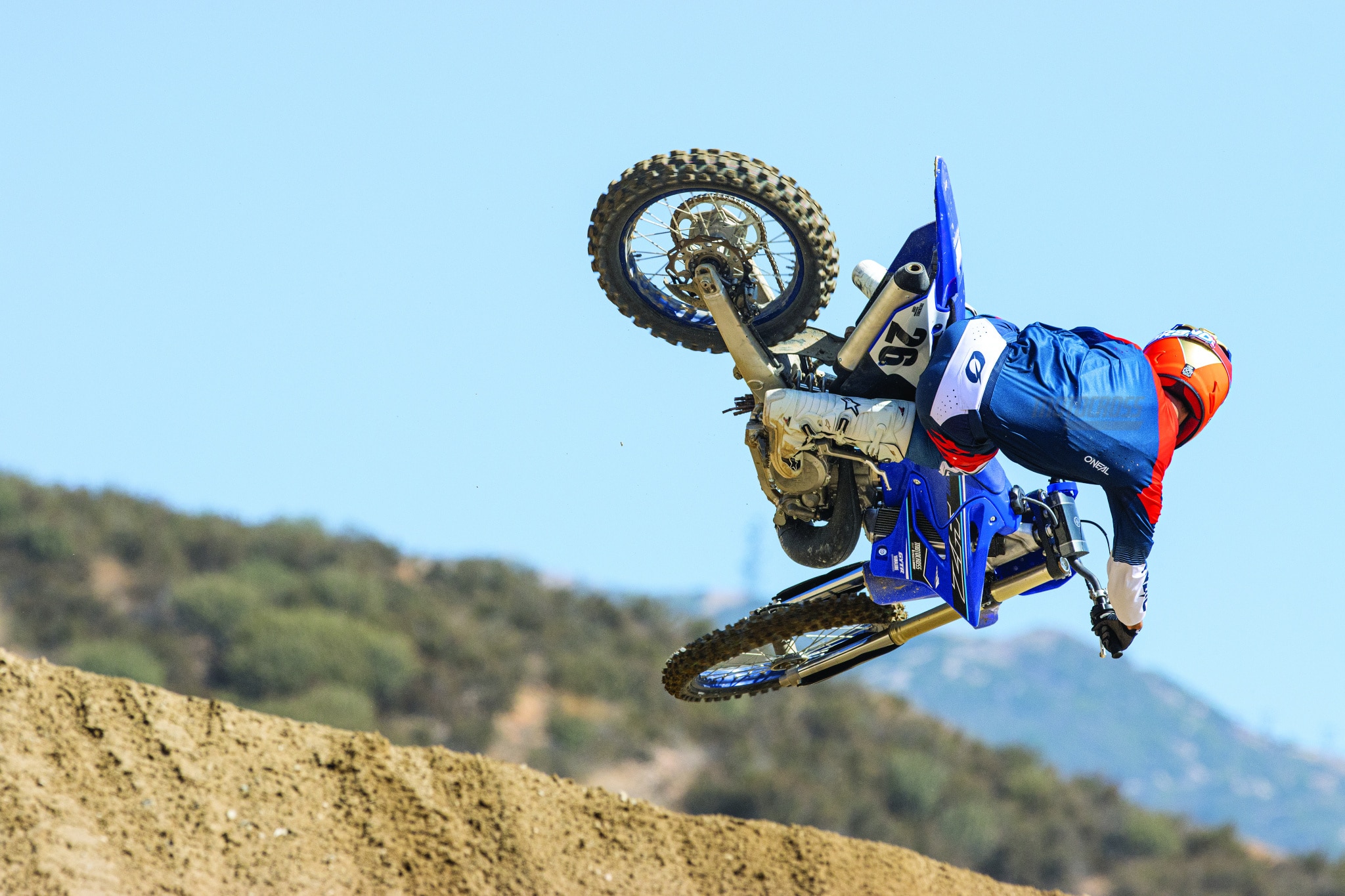
Q: HOW DOES THE 2021 YAMAHA YZ250 HANDLE?
A: Let’s not get too misty about the YZ250’s handling traits, because its best trait is that it doesn’t do anything wrong. It doesn’t trade straight-line stability for turning prowess. It doesn’t trade turning prowess for straight-line stability. It doesn’t seek quickness at the expense of accuracy. It doesn’t favor rigidity over suppleness. In short, it is predictable, stable and workman-like. Those may not sound like ecstatic adjectives, but that is because there is nothing to be ecstatic about. The 2021 Yamaha YZ250 is not the best-handling chassis on the showroom floor‚ but it has just enough of everything to win motorcycle races.
Q: WHAT DOES THE 2021 YAMAHA YZ250 WEIGH?
A: The 2021 YZ250 weighs 219 pounds. That is a lot lighter than a 238-pound Yamaha YZ450F, but it is heavy for a 250 two-stroke. How do we know? Because the KTM 250SX two-stroke weighs 212 pounds.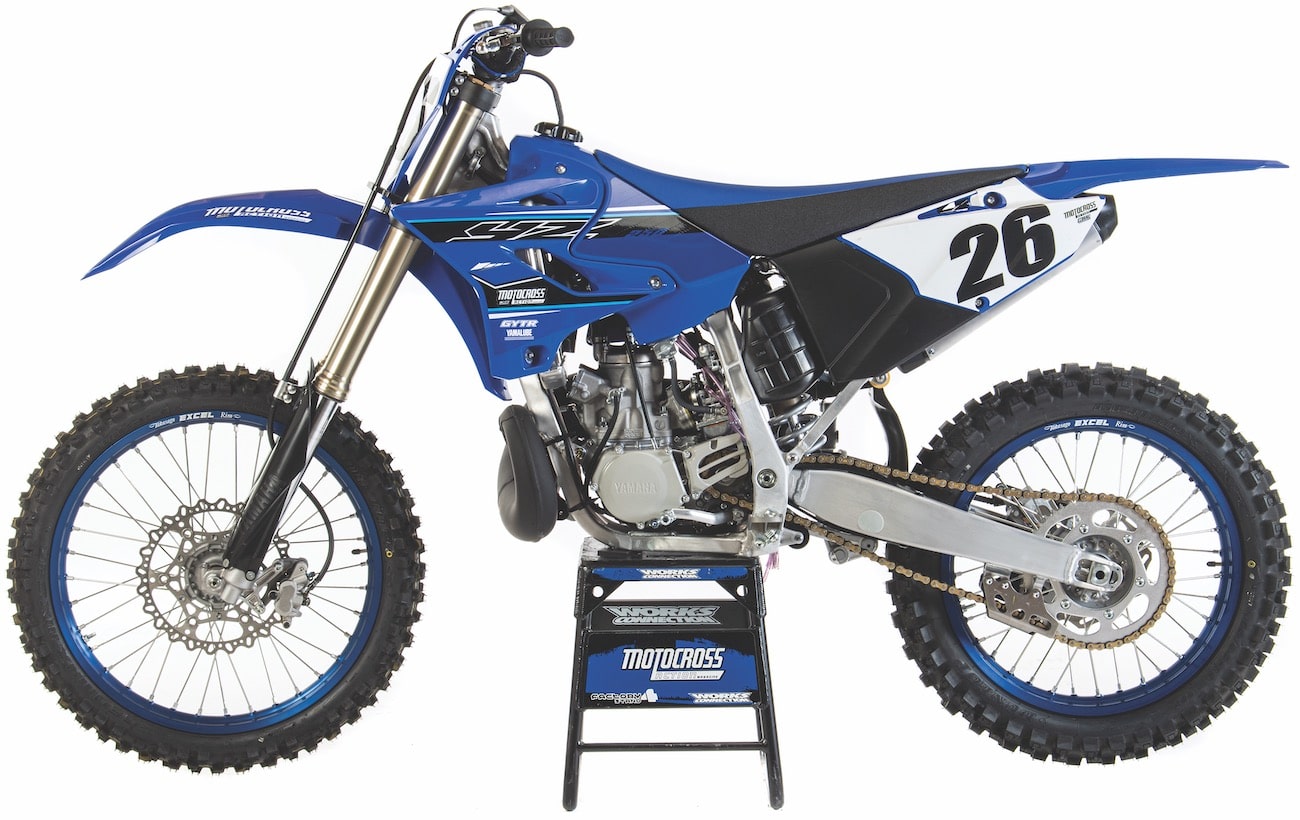
Q: WHAT DOES THE 2021 YAMAHA YZ250 TWO-STROKE COST?
A: In 2006, the ground-breaking Yamaha YZ250 retailed for $6199, and the 2006 KTM 250SX cost $6299—that is a $100 price difference. Sixteen years later, the 2021 Yamaha YZ250 costs $7499, and the 2021 KTM 250SX retails for $8399. That is a $900 price difference. The 2021 YZ250 is able to be so much cheaper because Yamaha has not invested in much more than new graphics since 2006. The 2021 KTM 250SX’s $900 price difference buys a race bike with a lighter weight, stronger brakes, bulletproof hydraulic clutch, changeable maps, better handling, adjustable power valve, no-tools airbox, counterbalancer and modern DNA. We promise you that spending $900 on hop-up parts for your YZ250 won’t even buy a Hinson clutch, let alone the other stuff.
Q: IS THE 2021 YAMAHA YZ250 WORTH THE MONEY?
A: Motocross bikes are, by design, meant to be displaced and replaced by the next big thing. They are expendable, throwaway, obsolescence-prone machines that have very short lifespans—the AMA even refuses to allow a rider on the track on a five-year-old bike. Even the greatest bikes of all time, bikes as omnipotent as the 2008 Honda CRF450, are forgotten in short order. That is the way of the world.
But, the Yamaha YZ250 is immune to planned obsolescence. It was so good 16 years ago that it has transcended time. There are more Yamaha YZ250s being ridden today than any other motocross bike. In truth, had Yamaha made significant changes to the bike over the years, the spell would have been broken. Without changes, buying a 2021 Yamaha YZ250 is like owning a barn-find 427 Cobra in mint condition. You know it can’t run with a Bugatti Veyron, but the Veyron can’t touch the raw emotion of driving a Cobra.
Q: WHAT SHOULD YAMAHA CHANGE ON THE YZ250 FOR 2022?
A: We have no illusions that there will be a totally new Yamaha YZ250 in the coming year, but if we had our druthers, here are the things we’d like Yamaha to do to next year’s pie-in-the-sky YZ250.
(1) Power. It is easy for a local racer to buy an exhaust pipe, reed cage and port job to take the 46.08-horsepower YZ250 up to 49 horsepower. It’s easy because it has been done thousands of times by shade-tree mechanics. We would hope that the Yamaha factory has people just as talented who could boost the 2022 YZ250 up to the 50-horsepower mark. It’s not that the YZ250 powerband isn’t good enough; it’s just that it could be so much better with a few nips and tucks in Japan.
(2) Rear suspension. We can carbon-date the YZ250’s suspension with a quick visual inspection. First, it still uses the small 22mm rear axle instead of the latest generation’s 25mm axle. Second, the rear shock-linkage pivot bolt is routed through the swingarm instead of mounted under the swingarm. Yamaha could easily put the YZ450F’s under-slung shock linkage, YZ450F hub, 25mm rear axle, wheel spacers and brake-caliper carrier on the 2021 YZ250 (although Yamaha would need to use the 2009 swingarm to get the YZ450F linkage and YZ250 top shock mounts to line up). The newest YZ450F swingarm is 4 percent less rigid vertically, 5 percent less rigid in twist and 8 percent more rigid horizontally. It is also 3/4 of a pound lighter than the old-school YZ250 two-stroke swingarm. Additionally, the YZ450F rear hub is 9 ounces lighter than the YZ250 hub. The total savings in unsprung weight is 1 pound, 6 ounces.
(3) Inertia. Many YZ250 racers add 9-ounce flywheel weights to their engines to spread out the power, increase traction and add a little extra over-rev. And, this included the Yamaha factory riders during the two-stroke era. Yamaha could easily change the flywheel inertia at the crank to achieve the same thing or just mount a heavier, stock flywheel.
(4) Gearing. Yamaha should just go ahead and put the 51-tooth sprocket on that every in-the-know YZ250 racer uses. This isn’t out of the question, because in 2019 Yamaha upped the YZ450F gearing by 1 tooth to stay in sync with what YZ450F racers were doing. After 16 years, Yamaha could listen to the YZ250 guys also.
(5) Transmission. MXA test riders have been asking Yamaha’s engineers to close the gap between second and third gears for years. They told us that it couldn’t be done, and then, when they introduced the YZ250X cross-country model in 2016, it came with a transmission that had the identical first and second gears as the YZ250 motocross bike, but with a third gear that was lower than on the YZ250, meaning that the gap between second and third was closed up. From this, we surmise that Yamaha could have done it on the YZ250 but didn’t want to.
(6) Fork/shock. We think that Yamaha should put the latest forks and shock that come on the YZ250F and YZ450F on the YZ250. This would be made much easier if Yamaha changed the components so that the YZ250 and YZ450F used the same running gear, axles, swingarm, shock towers and brake carriers. Every year, Yamaha makes updated components for the YZ250F and YZ450F, but rarely do these updated parts fit the YZ250 two-stroke.
Q: WHAT CHANGES HAVE BEEN MADE TO THE YAMAHA YZ250 OVER THE LAST 16 YEARS?
A: Modern YZ250 history is carbon-dated from the 2006 model because that is when Kayaba SSS suspension was added to the package to bring the YZ250 to the forefront of the two-stroke universe; however, in 2005, Yamaha introduced its simple plug-and-play aluminum frame, and in 2003 the current engine was developed. Here is the chronology of the YZ250’s development from the introduction of the aluminum frame to today.
2005. The old steel frame was dropped in 2005 for a creative plug-and-play aluminum design that was 4 pounds lighter than the 2004 steel frame. In fact, the 2005 YZ250 was 7-1/2 pounds lighter than the 2004 YZ250. Additionally, the 2005 YZ250 got Honda-style front brake-hose routing and Renthal 7/8-inch aluminum handlebars.
2006. Yamaha kicked out the jams in 2006 with new SSS suspension, a new rear brake caliper, on-the-fly clutch adjuster, 2mm-wider triple-clamp spacing and a Ti shock spring. The most significant of the 2006 changes was the addition of Kayaba SSS suspension.
2007. The big change for 2007 was the swap to the N3EW needle that most hardcore racers had been using in 2006. The N3EW needle delivered a big improvement in bottom-end and mid-range response from the 38mm Keihin PWK carburetor. In 2007, the 7/8-inch Renthals from 2005 were swapped out for 1-1/8-inch Renthal Fatbars.
2008. It was not a big year for mods. The 2008 YZ250 got a downsized front brake caliper, wave-style rotors, and triple clamps with removable bar mounts.
2009. In 2009, Yamaha finally drop-kicked its massive steel front brake-hose clamp for a smaller and lighter aluminum clamp.
2010. BNG.
2011. The 2011 YZ250 got the 75mm-longer Euro-spec silencer. The compression ratio was reduced from 10.9:1 to 10.6:1 by increasing the volume of the combustion chamber by 0.5cc (this enabled the YZ250 to run a wider range of fuels available in both the USA and Europe). Finally, Yamaha added a neutral ignition switch to retard the mapping when the bike was in neutral (to help beat sound tests).
2012. BNG.
2013. The blue rear fender was switched to white plastic.
2014. The white rear fender was returned to blue.
2015. Yamaha updated the styling of all the plastics, save for the front number plate and gas tank, to the “arrow” look of the YZ-F four-strokes.
2016. Yamaha changed from silver rims to black.
2017. Yamaha upsized the front brake rotor from 250mm to 270mm.
2018. The black rims were dumped in favor of blue rims. And, as with every model change since 2006, it got mild BNG.
2019. BNG.
2020. BNG.
2021. Yamaha changed the number plates from white to blue, the fork guards from white to black, and added new BNG.
Q: WHAT DID WE HATE?
A: The hate list:
(1) Chassis. The YZ250’s chassis has always been a middle-of-the-road handler. It does nothing special at turn-in, but it also does nothing bad at turn-in. It’s a bike without flaws but without highlights, either.
(2) Engine. Love the powerband, but its Austrian competition will leave it in the dust off the start, up hills or in sand. Yes, we know that we can buy more YZ250 horsepower on the aftermarket‚ but that quickly erases the $900 price gap between the Yamaha and the KTM.
(3) Gear ratios. The upshift from second to third needs help. Luckily, once in third gear, no matter how far you rev the engine, it will never fall on its face. In a perfect world, we would like to see Yamaha move third gear closer to second (as Yamaha did on the YZ250X offroad version), but until Yamaha builds a new motocross gearbox, we will just add a tooth to the rear sprocket.
(4) Clutch. We always order stiffer clutch springs for our Yamaha YZ250s, but we don’t always use them‚ or rather we don’t always use all of them. We prefer to mix and match a set of stock and aftermarket clutch springs to fine-tune the feel.
Q: WHAT DID WE LIKE?
A: The like list:
(1) Powerband. We think that more midrange horsepower would be helpful, but then so would more power everywhere. We love the YZ250’s power curve but need more oomph in the low-to-middle segment of the powerband.
(2) Suspension. The Kayaba SSS fork and shock are raceable right off the showroom floor.
(3) Maintenance. It doesn’t take a mechanical genius to keep a YZ250 running. Changing a top end is cheap and easy compared to a four-stroke. It is made all the more affordable by the fact that you can do it yourself.
(4) Bulletproof. The YZ250 is like the Energizer Bunny—it just keeps going and going.
Q: WHAT DO WE REALLY THINK?
A: Buyers of 2021 YZ250 two-strokes are crusaders. They are flying the flag of an engine type that got a raw deal from the AMA when it allowed four-strokes to have much greater displacement because they would be uncompetitive without a handout. This is the same AMA that refuses to allow two-strokes to compete today with equal displacement in Supercross and the Nationals. YZ250 riders know in their heart of hearts that the two-stroke is the greatest motocross engine ever built—and they want to prove it to the four-stroke guys in front of them. That’s half the fun of racing a two-stroke.
MXA’S 2021 YAMAHA YZ250 SETUP SPECS
This is how we set up our 2021 Yamaha YZ250 for racing. We offer it as a guide to help you find your own sweet spot.
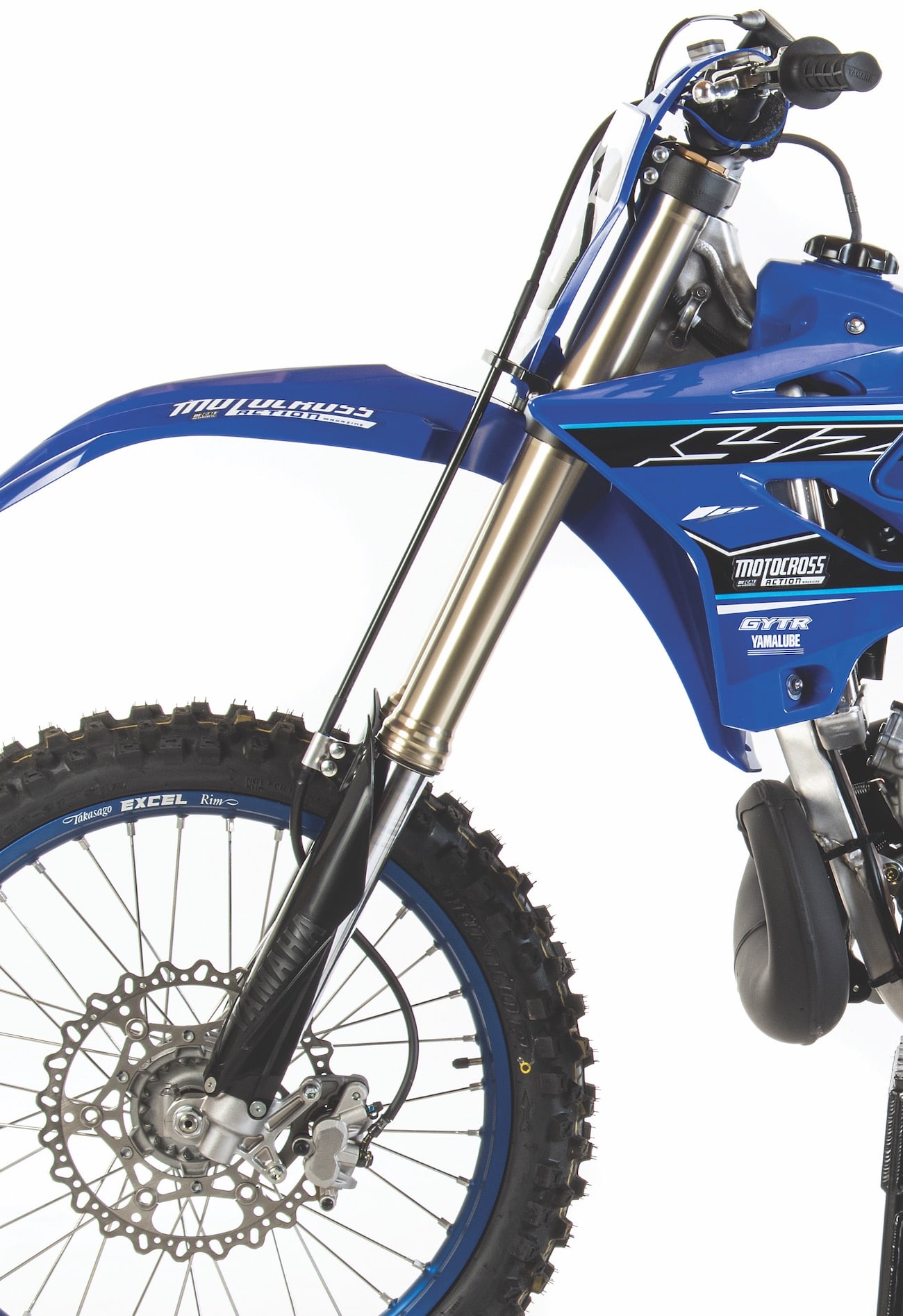
KAYABA SSS FORK SETTINGS
For hardcore racing, we ran this setup on the 2021 Yamaha YZ250 (stock clickers are in parentheses):
Spring rate: 0.43 kg/mm
Compression: 13 clicks out
Rebound: 14 clicks out
Fork-leg height: 5mm up (10mm up)
Notes: These are awesome forks, made all the more terrific by the light feel and snappy input of the two-stroke engine. Obviously, if you are fast or fat, you might want to go stiffer on the fork springs. Typically, however, fast riders can dial in more compression (and use the crossover effect of rebound damping to get the stock fork springs to work).
KAYABA SSS SHOCK SETTINGS
For hardcore racing, we ran this setup on the 2021 Yamaha YZ250 (stock clickers are in parentheses):
Spring rate: 4.7 kg/mm
Race sag: 105mm
Hi-compression: 1-3/4 turns out (1-1/2 turns out)
Lo-compression: 8 clicks out (13 clicks out)
Rebound: 8 clicks out (12 clicks out)
Notes: The YZ250 shock comes with a jumbo-sized 18mm shock shaft, Kashima-coated internals and SSS damping. AMA National-speed riders and heavyweight contenders will need to move up to a 5.0 kg/mm spring.
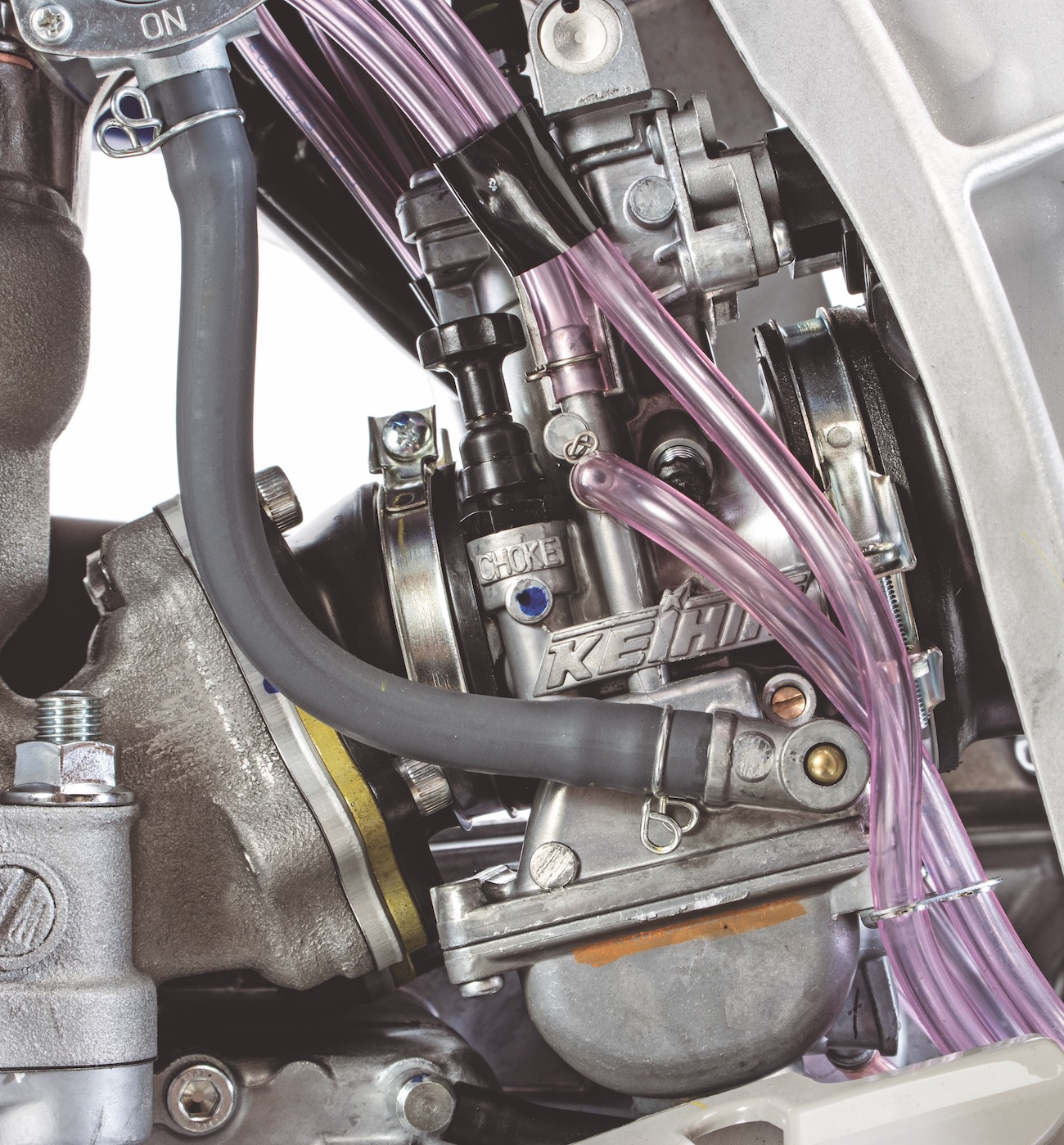
YAMAHA YZ250 JETTING
Here are MXA’s recommended jetting specs (when changed, stock specs are in parentheses):
Main: 178
Pilot: 50
Needle: N3EW
Clip: 2nd from top
Air screw: 1 turn
Notes: The 2021 YZ250 jetting is on the edge, albeit the good side of the edge. If you hop-up the YZ250 or add an aftermarket exhaust pipe, you will need to go to a bigger 180 main or add VP C-12 fuel in a 50/50 ratio with your pump gas. Other than that, the YZ250 jetting is basic, simple and effective. The air screw is very sensitive from 1/2 turn to 1 turn out.


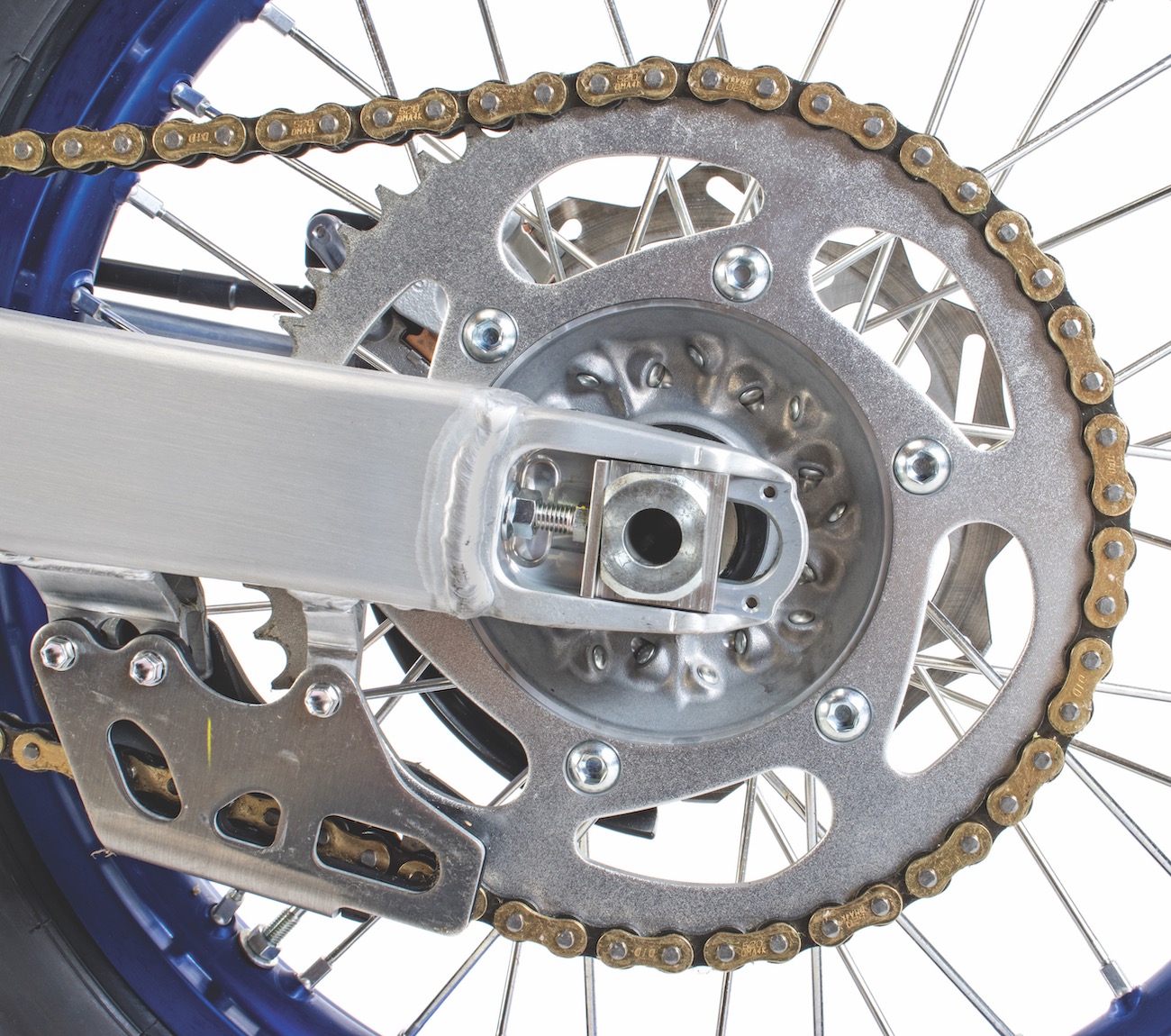

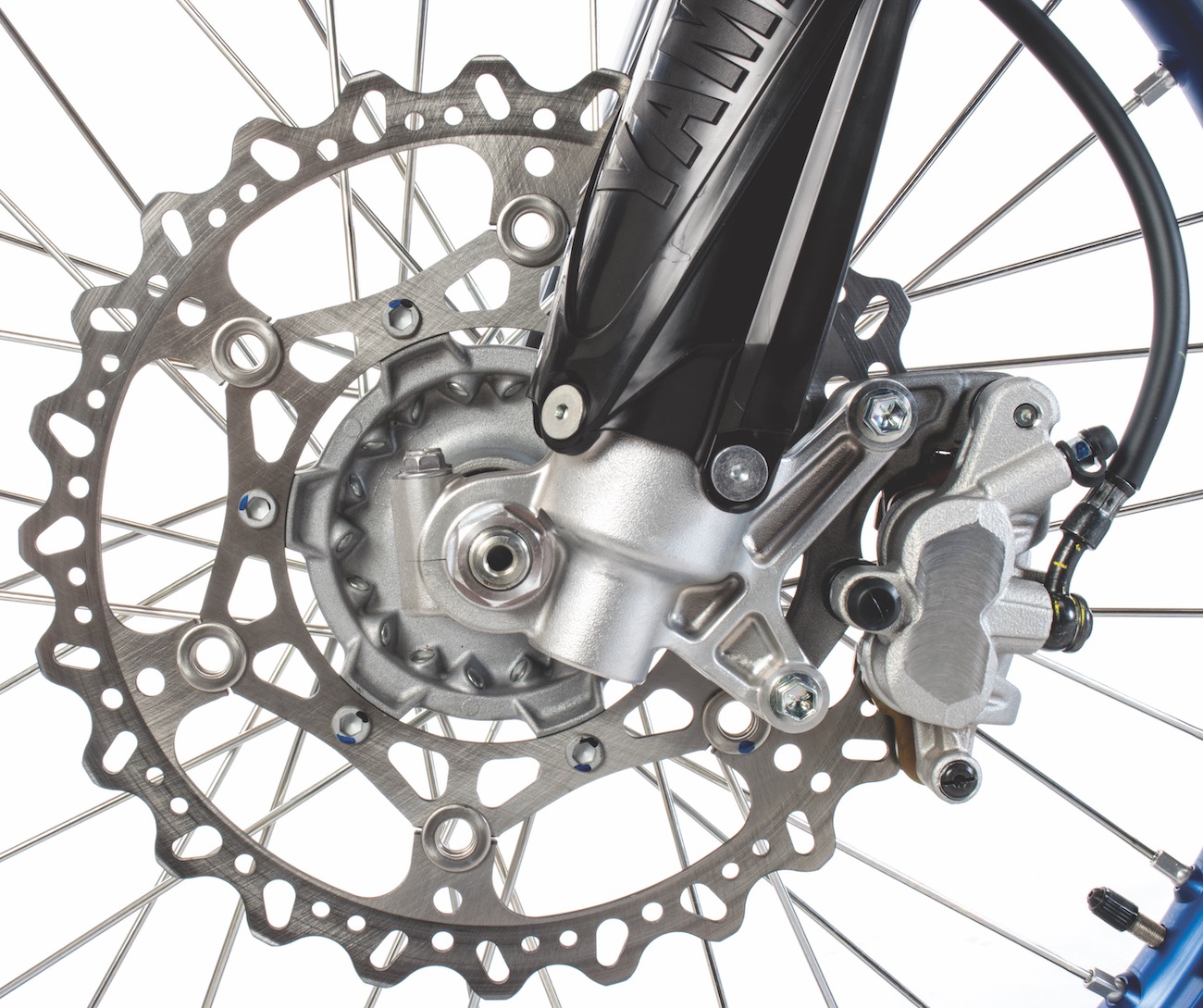





Comments are closed.